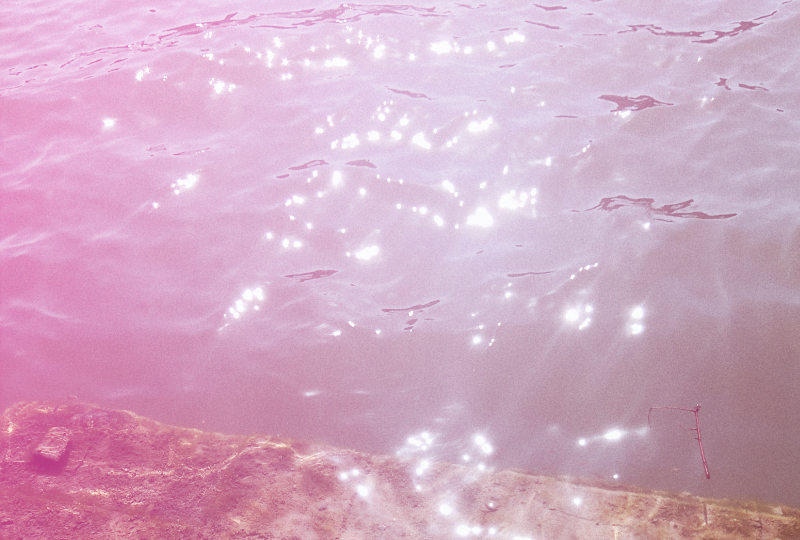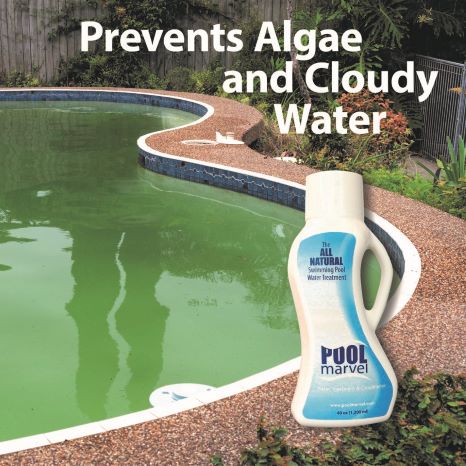
Pink Slime in the Pool
Pink slime is an airborne bacterium that resembles algae and is sometimes referred to as pink algae. Formally known as Serratia Marcescens, pink slime thrives in moist, warm environments and can sometimes appear in a swimming pool. Besides looking unappealing, pink slime in pools harms your pool and your health – making proper treatment crucial.
Jump To Section:
What Is Pink Slime or Pink Algae in Pool Water?
What Causes Pink Slime in Pool Water?
How To Prevent Pink Slime in Pools
How To Treat Pink Slime in Pools Using Chlorine
How To Treat Pink Slime in Pools Using Biguanide
What Is Pink Slime Or Pink Algae In Pool Water?
Pink slime appears as orangish-pink slime layers in your pool water and streaks in corners, crevices, pipe fittings, and light fixtures on the water’s surface. Eventually, it may cover an entire pool area. Although it’s a type of bacteria and not actually algae, it’s often referred to as pink algae.
The pink coating usually appears in swimming pool areas that lack direct sunlight and have minimal water movement, such as skimmers and ladders. Pink slime grows anywhere water is present and continues to grow until it’s appropriately eliminated. If left untreated, pink slime can cause staining on your pool finish.
This harmful bacterium can enter the human body via the eyes, nose, and open wounds, potentially leading to illnesses including pneumonia, lower respiratory tract infections, or urinary tract infections. Due to its slimy nature, it can contribute to injuries from slips and falls on pool fixtures.
When pink slime is in pool water, it’s usually present in a pool’s pipes and filters. When the pool system returns the water via the return jets, the mould and bacteria receive the opportunity to populate inside the pool.
What Causes Pink Slime In Pool Water?
Although there’s no single cause of a pink slime infestation, it’s usually attributed to poor pool maintenance and water chemistry.
When your pool water is imbalanced or improperly sanitized, you create the perfect environment for algae and bacteria to develop. As the white mould in the pool water grows, so does the pink slime. The pink slime quickly depletes your pool sanitizer and other pool chemicals, which affects the entire balance of your pool.

How To Prevent Pink Slime In Pools
To prevent the formation of pink slime in pool water, follow the steps below:
1. Practise Proper Pool Maintenance
Keeping your pool clean is the easiest way to prevent pink algae from forming in your pool.
Brush your pool walls and crevices at least three times per week, vacuum your pool weekly, and run your pump and filtration system properly.
2. Keep Your Pool Properly Balanced
Complete regular testing of your pool water and balance chemicals when necessary. Shock your pool weekly, or use an oxidizer if you have a biguanide pool.
How To Treat Pink Slime In Pools Using Chlorine
Fixing pink slime in pool water takes considerable time and effort. If it’s not entirely removed, there’s an opportunity for the problem to recur. Often, algaecides and other anti-algae treatments are useless unless a specific type for treating pink slime is used.
The steps below outline how you can treat pink slime in pools using chlorine:
1. Test and Balance Your Pool Water
Test the levels in your pool water and balance any pool chemicals necessary. Pay special attention to your pool’s pH – besides sanitizer, it is the most heavily affected by pink slime.
2. Super Chlorinate Your Pool and Filter
You’ll need to complete more than a regular shock treatment to destroy pink slime in pool water. Use a triple or quadruple amount of shock product (4 pounds per 10,000 gallons of water) at night for maximum effectiveness.
Keep your chlorine levels at 30 ppm for 72 hours, continuously testing your chlorine level since it will get depleted quickly. Expose your pool filter to the same high level of chlorine.
3. Skim and Brush the Pool
Use a pool skimmer to remove any pink slime on the water’s surface.
Using either a soft bristle brush for a vinyl liner or a steel bristle brush for plaster or concrete finishes, brush any slime built up on the walls and floor. Pay close attention to crevices such as around the ladders and skimmer.
You can also use an algaecide specifically formulated to destroy pink slime. Follow the manufacturer’s directions to apply the algaecide treatment.
4. Operate the Pool Pump, then Repeat Brushing
Run the pump for the following 24 hours, then repeat the brushing process once more.
5. Vacuum the Pool
With the vacuum set to waste, manually vacuum the pool to remove any lingering debris.
Use a garden hose with a pre-filter to top up your pool if necessary.
6. Rebalance Your Pool Water
After 72 hours, the pink slime should be gone. Wait until your chlorine level drops to normal, then rebalance your water.
How To Treat Pink Slime In Pools Using Biguanide
To treat pink slime in pools using biguanide, you can follow the same process as treating pink slime in pools using chlorine, with the following exceptions:
- Use a triple or quadruple dose of oxidizer instead of pool shock
- Add enough sanitizer to increase the biguanide level to 50ppm
- If using an algaecide, you’ll want to add a biguanide algaecide instead of a pink slime algaecide
- If your biguanide levels are below 50ppm in step #6, raise them back up, clean the filter, then operate the pump. When the water clears, you can resume swimming.

